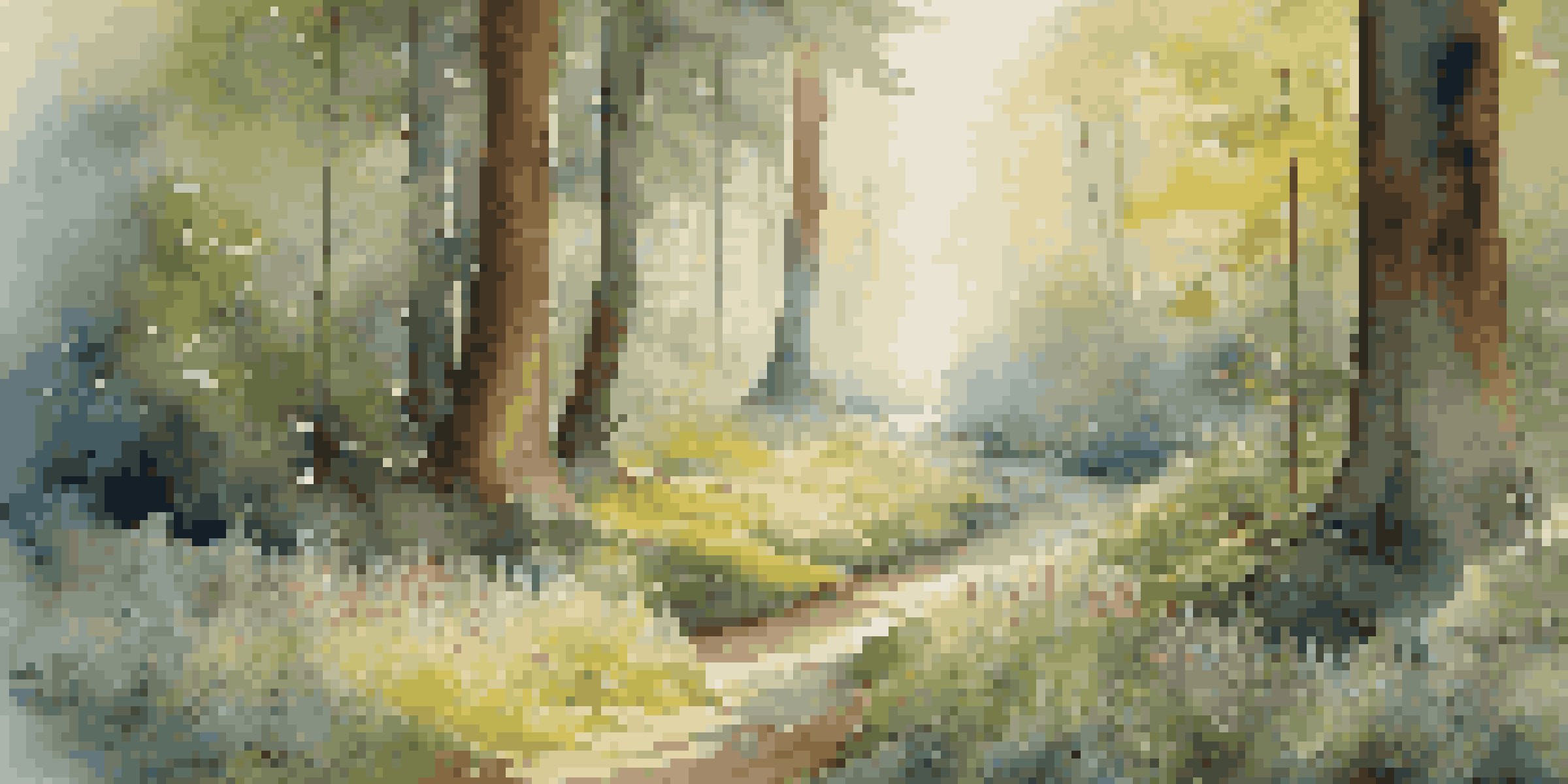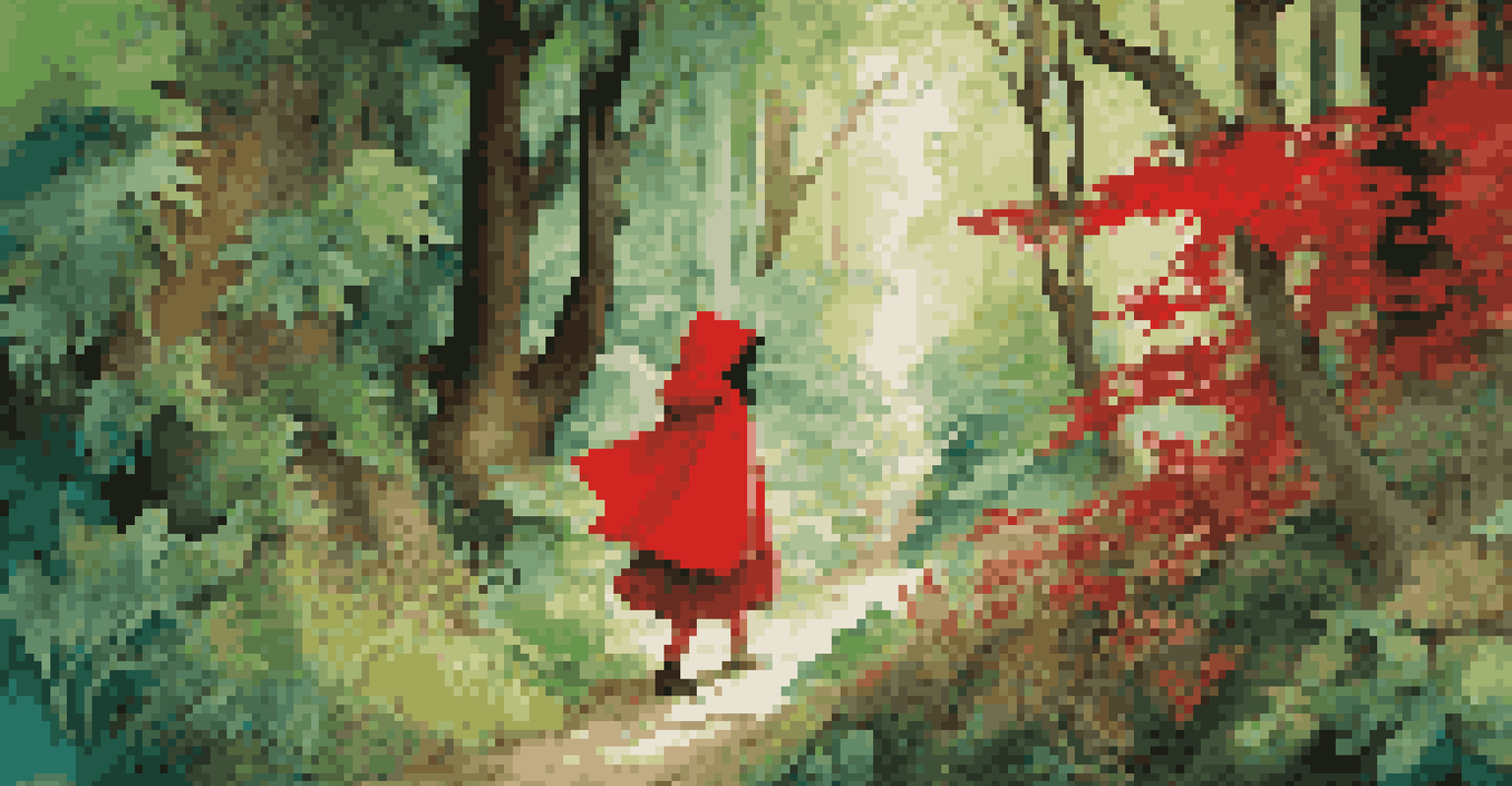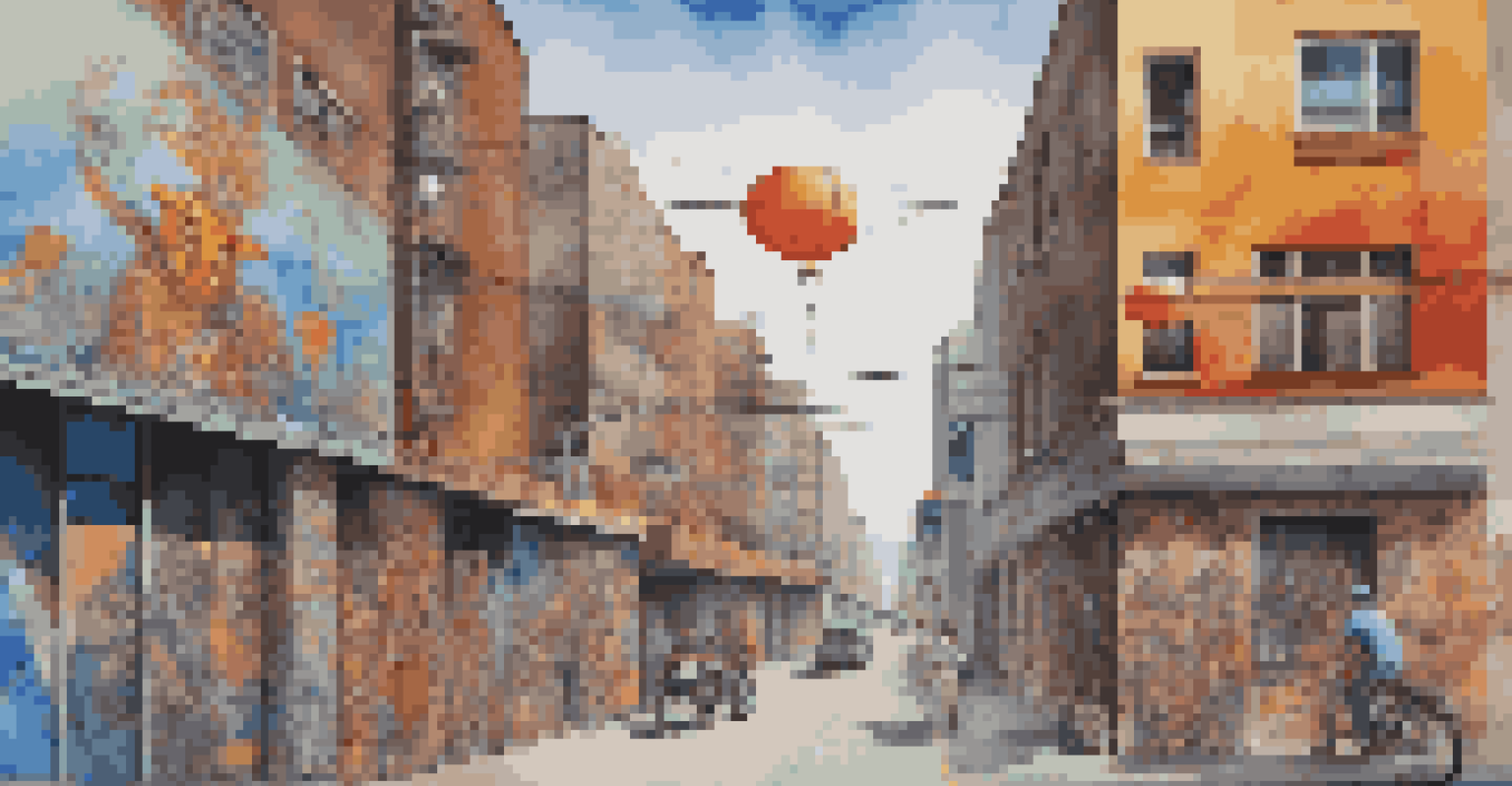The Influence of Folklore on Subconscious Artistic Themes

Understanding Folklore: More Than Just Stories
Folklore encompasses the traditional beliefs, legends, and customs of a culture, often passed down through generations. It's a rich tapestry of narratives that shape collective identities and connect communities. When artists tap into these stories, they aren't just borrowing themes; they're channeling the essence of their culture, tapping into the subconscious shared by their audience.
Folklore is the memory of a people, a reminder of our past that shapes our present and future.
These age-old tales resonate on a deeper level because they evoke familiar emotions and archetypes that many people can relate to. Think of the fairy tales we grew up with; they serve as both entertainment and moral lessons, often reflecting societal values of the time. This shared understanding allows artists to communicate complex ideas through relatable narratives.
For instance, the tale of Little Red Riding Hood can be seen in various artistic interpretations, each unearthing new layers of meaning. Whether it’s about innocence, danger, or empowerment, these themes echo across generations, illustrating how folklore influences artistic expression. In essence, folklore acts as a backdrop against which artists can explore and convey the human experience.
The Subconscious: A Canvas for Folklore
The subconscious mind is a powerful force in creativity, acting as a reservoir of memories, emotions, and experiences. Folklore plays a vital role in shaping this inner world, often providing symbols and motifs that artists draw upon instinctively. These symbols linger in our minds, influencing our thoughts and creations without us even realizing it.

When artists engage with folklore, they often tap into archetypal figures—like the hero, the trickster, or the wise old woman—that resonate universally. These archetypes evoke emotions and responses that stem from our collective unconscious. For example, the hero's journey is a recurring theme in many folklore traditions, reflecting our innate desire for growth and transformation.
Folklore Shapes Artistic Expression
Folklore provides artists with a rich tapestry of narratives and archetypes that resonate deeply, allowing them to explore and convey complex human experiences.
Thus, when an artist incorporates these elements into their work, they are not just telling a story; they're connecting with something deeper within their audience. The interplay between the conscious and subconscious creates a rich tapestry of artistic expression, rooted in the familiar yet constantly evolving through personal interpretation.
Artistic Techniques Influenced by Folklore
Artists often employ various techniques to convey folklore themes, such as symbolism, allegory, and metaphor. These methods help bridge the gap between the tangible and the intangible, allowing audiences to access deeper meanings. For instance, an artist might use a specific color palette to evoke the emotions tied to a particular folklore story.
Art is the most beautiful of all lies; folklore is the truth that paints the picture of our humanity.
Take the use of shadow and light in painting; it can reflect the duality often found in folklore, such as good versus evil. This technique allows artists to explore complex narratives while inviting viewers to engage with the work on multiple levels. The interplay of light and dark can symbolize the internal struggles faced by characters, making the artwork relatable and profound.
Moreover, storytelling through visual arts, such as murals or installations, can transform public spaces into living narratives. These artistic expressions breathe life into folklore, inviting communities to engage with their cultural heritage actively. In this way, folklore is not just a source of inspiration but also a medium for connection and reflection.
Folklore in Modern Artistic Movements
As we explore contemporary art, it’s fascinating to see how folklore continues to influence modern movements. Artists today often reinterpret traditional narratives, blending them with modern themes to comment on current societal issues. This fusion of the old and new creates a dynamic dialogue between the past and the present.
For example, street art can incorporate folklore elements to address community identities and struggles. By using familiar symbols and stories, artists can resonate with a wider audience, making their messages more impactful. This approach not only honors cultural heritage but also revitalizes it for a new generation.
Cultural Preservation Through Art
Artists act as cultural custodians by incorporating folklore into contemporary works, ensuring traditional stories endure while fostering dialogue between generations.
Moreover, digital art and multimedia installations are providing fresh mediums for folklore reinterpretation. Artists can now reach global audiences, sharing their cultural stories in innovative ways. This evolution showcases how folklore remains relevant, continuously shaping artistic themes while inviting ongoing exploration.
Psychological Impact of Folklore on Artists
The psychological effects of folklore extend beyond mere inspiration; they can also influence the mental well-being of artists. Engaging with traditional stories can provide a sense of belonging and purpose, grounding artists in their cultural identity. This connection often translates into their work, making it more authentic and emotionally resonant.
Furthermore, folklore can serve as a therapeutic tool, allowing artists to process their emotions and experiences through storytelling. By channeling their feelings into art that reflects their cultural narratives, artists can find healing and empowerment. This cathartic process not only benefits the artist but can also resonate deeply with audiences facing similar struggles.
Ultimately, the psychological interplay between folklore and artistic creation underscores the profound impact of culture on individual expression. It highlights how stories can shape our understanding of ourselves and the world around us, enriching both the artist's journey and the audience's experience.
Folklore and Its Role in Cultural Preservation
Folklore plays a critical role in preserving cultural identities, especially in a rapidly globalizing world. Artists often serve as cultural custodians, using their work to keep traditional stories alive. By incorporating folklore into contemporary art, they help bridge the gap between generations, ensuring that these narratives endure.
Through their creations, artists can raise awareness of cultural heritage and promote appreciation for diverse traditions. This not only fosters a sense of pride within communities but also encourages dialogue between different cultures. By celebrating folklore, artists contribute to a broader understanding of the human experience.
Future of Folklore in Art
Advancements in technology and global connectivity offer artists new ways to reinterpret folklore, keeping these narratives relevant and impactful in today's world.
In this way, folklore becomes a living entity, continually evolving while maintaining its roots. The artistic interpretation of these stories allows cultures to adapt and thrive, ensuring that their unique narratives are not lost but rather transformed into something new and relevant.
The Future of Folklore in Art
As we look ahead, the future of folklore in art appears bright and promising. With advancements in technology and new artistic mediums emerging, artists have more opportunities than ever to explore and reinterpret traditional narratives. This evolution invites a fresh perspective, where folklore can meet contemporary issues head-on.
Moreover, the rise of global connectivity means that artists can share their cultural stories with a worldwide audience. This cross-pollination of ideas fosters a rich environment for collaboration and innovation, leading to new interpretations of folklore that resonate across cultures. It’s an exciting time for artists to experiment and innovate.

Ultimately, the enduring influence of folklore will continue to shape artistic themes, enriching the creative landscape for years to come. As artists delve into their cultural heritages, they will find endless inspiration, ensuring that the stories of the past remain relevant and impactful in the future.